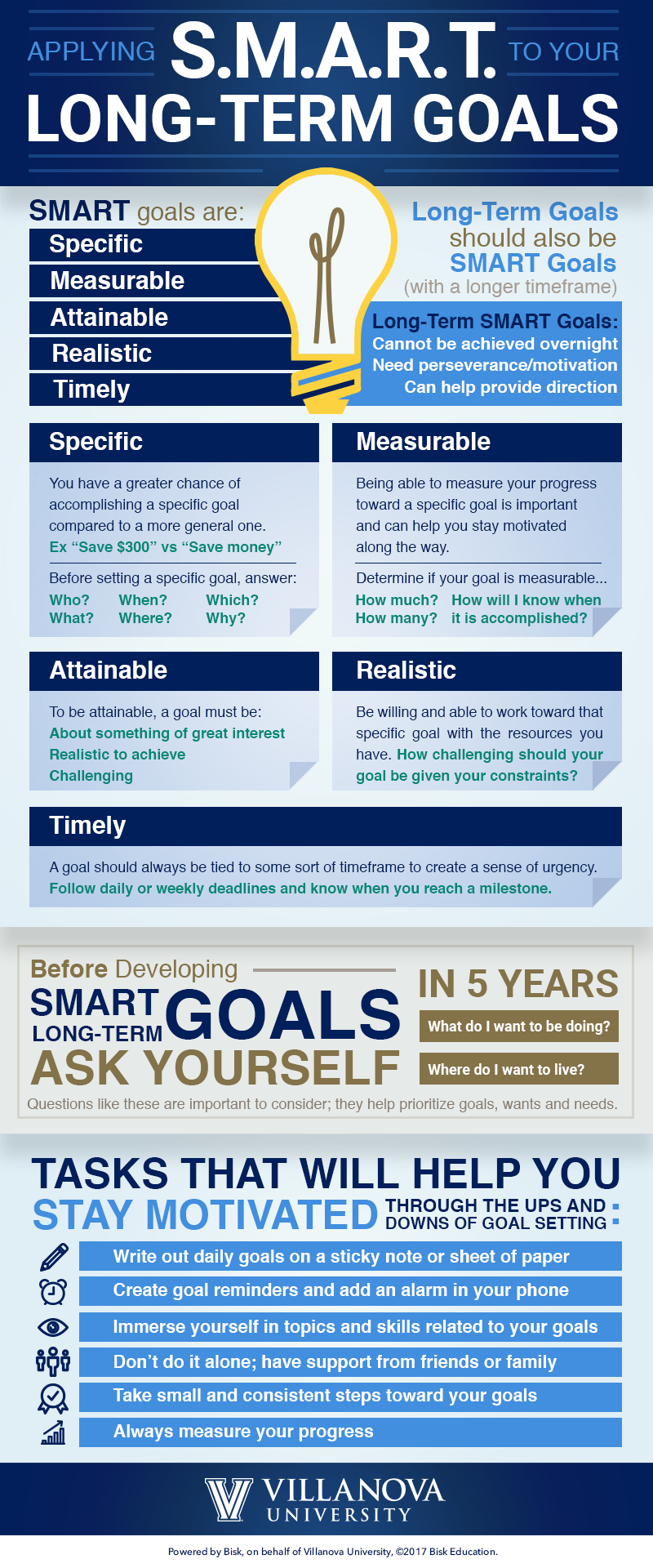Complete College with a SMART Action Plan

Last Updated May 4, 2016
Have you considered what you want to achieve in your career, your finances and your relationships by the end of the year? The topic of goal setting is probably one the most valuable skills people can learn, and it’s one that can help dictate future success or failure.
Learning how to properly set goals is a necessary skill. Goals without focus or direction are destined to fail. Goal setting can be beneficial by providing focus, giving a sense of purpose, being a source of motivation and developing responsibility.
In your goal setting process, make sure you follow the SMART system.
How to Set SMART Goals
SMART goals are: Specific, Measurable, Attainable, Realistic and Timely. Comparing goals against the SMART criteria can help assess the return on investment (ROI) of the desired goal. Here, we’ll break down the SMART acronym and explain more about what each word means.
Specific
A specific goal typically has a greater chance of being accomplished when compared to a more general goal. An example of a general goal may be to “save money,” while a specific goal would be to “save $300 a month.” Before setting a specific goal, answer the six “W” questions: who, what, where, when, which and why.
Measurable
Being able to measure your progress toward a specific goal is important and can help people stay motivated along the way. To determine if your goal is measurable, ask yourself these three questions:
- How much?
- How many?
- How will I know when it is accomplished?
Attainable
For a goal to be attainable, it should be something that a person is passionate about. Goals created without passion and motivation for its completion can result in failure. Attainable goals should be challenging, but realistic to achieve in a reasonable timeframe.
Realistic
Setting realistic goals doesn’t necessarily mean you can’t aim high. It just means you must be willing and able to work toward that specific goal with the resources you have. Each person should decide how challenging their goal should be since they are likely most aware of the constraints impeding the progress of the goal.
Timely
A goal should always be tied to some sort of timeframe. Without one, there is no sense of urgency and no accountability for the work being completed. It’s often wise to follow daily or weekly deadlines so you know when a milestone has been reached.
Applying SMART to Your Long-Term Goals
Long-term goals should be SMART goals too; they just typically have a longer timeframe. Long-term goals cannot be achieved overnight. For example, a college degree is a long-term goal for many people, but in most cases, it takes years of perseverance to accomplish, especially if you are working full-time.
Setting long-term goals can help provide college students with a sense of direction. Before developing SMART long-term goals, ask yourself a couple questions.
- Where do I want to be five years from now?
- What do I want to be doing?
- Where do I want to live?
Questions like these are important to consider, as they can help prioritize goals, wants and needs.
Tasks to Stay Motivated
While other factors exist, motivation is a common obstacle for people who have lofty or long-term goals. Here are some exercises that can help you stay motivated through the ups and downs of goal setting.
- Write out daily goals on a sticky note or sheet of paper
- Create goal reminders and add an alarm in your phone
- Immerse yourself in industry topics and skills related to your goals
- Don’t do it alone; have support from friends or family
- Take small and consistent steps toward the goal
- Always measure your progress
Combined with SMART goal setting, using these tips and tricks can help improve your focus, purpose and responsibility, and make short and long-term goals a reality.






